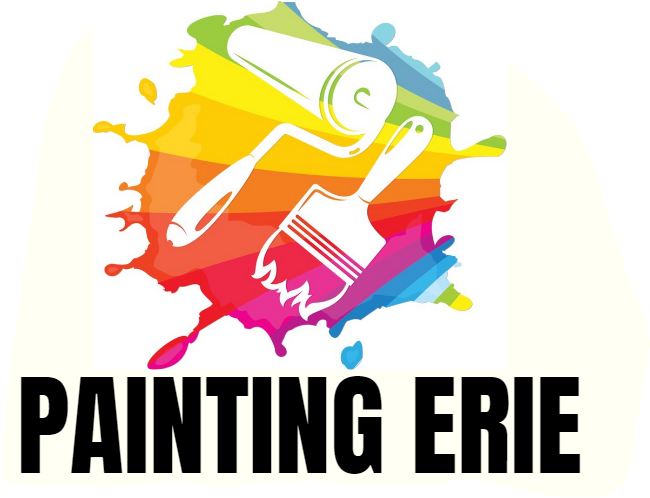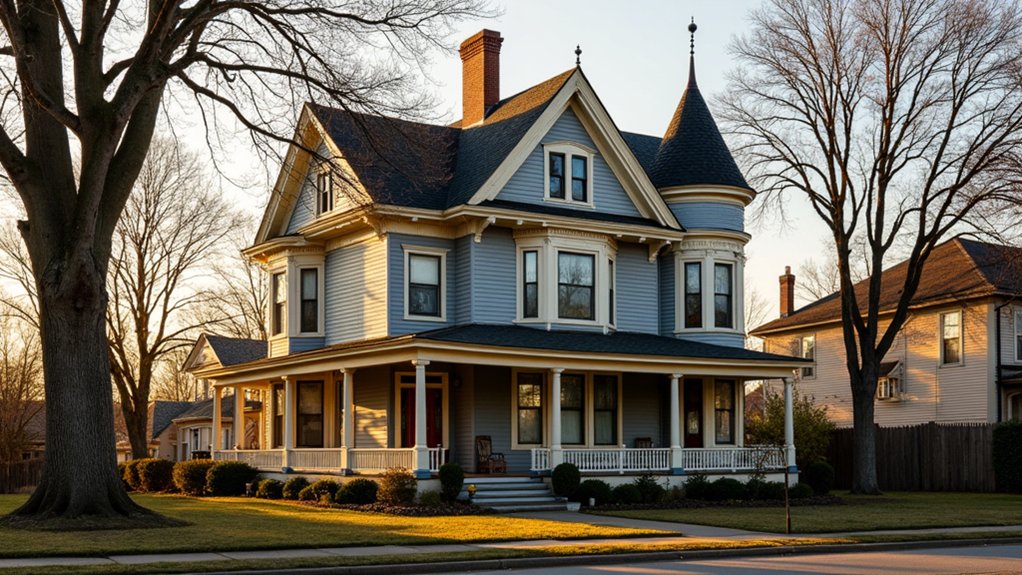As you stand before your historic Erie home, you’re tasked with finding the perfect paint colors to pay tribute to its rich heritage. You’ll want to ponder the era’s aesthetic, blending European-inspired architectural styles with the natural beauty of the surrounding landscape. From soft, muted tones to rich, bold hues, the possibilities are endless. But where do you start? Take a step back, and let’s investigate the best paint colors for your historic gem, beginning with the subtle shades that evoke a nostalgic vintage charm.
Understanding the Era’s Aesthetic
During the late 19th and early 20th centuries, when many of Erie’s historic homes were built, designer styles were heavily influenced by European traditions. You’ll notice that these period influences are reflected in the ornate details, intricate woodwork, and grand facades of these homes.
As you explore the historic inspiration behind these architectural gems, you’ll uncover that each era had its unique character. For instance, Victorian-era homes often featured bold, lively colors, while Arts and Crafts homes tended towards more subdued, earthy tones. Understanding these nuances is essential when selecting paint colors that will complement your historic home’s original charm. By embracing the era’s aesthetic, you’ll be able to choose colors that not only honor the home’s heritage but also create a sense of authenticity and belonging. Additionally, selecting the right exterior paint can provide protection from elements and preserve the structural integrity of these historic properties.
Soft and Subtle Shades for a Vintage Look
As you seek to honor your historic home’s vintage charm, you’ll find that soft and subtle shades can work wonders in recreating its original ambiance. Soft muted tones, such as creamy whites, gentle grays, and pale blues, evoke a sense of nostalgia and serenity. These understated hues allow the home’s structural details to take center stage, rather than competing with bold colors.
Delicate pastel shades, like pale pink, baby blue, and mint green, can also add a touch of vintage elegance to your historic home. These gentle colors bring a sense of softness and subtlety, reminiscent of a bygone era. When choosing a paint color, consider the natural surroundings, the home’s original color palette, and the era in which it was built. By doing so, you’ll create a harmonious and authentic look that honors your home’s rich history. Additionally, consulting with professionals can help you select non-toxic paint options to ensure safety for your family and preserve the integrity of your historic home.
Rich and Bold Colors for a Dramatic Effect
If you’re looking to make a statement with your historic home’s exterior, rich and bold colors can create a dramatic effect that turns heads. These saturated hues can add depth and visual interest to your home’s facade, making it stand out from the rest.
Consider deep blues, like navy or indigo, which evoke a sense of luxury and sophistication. Rich reds, such as burgundy or crimson, can add a touch of elegance and polish. To take your bold color choice to the next level, pair it with dramatic textures like rough-hewn stone or ornate woodwork. The contrast between the smooth paint and the rugged texture will create a visually striking effect that’s sure to turn heads.
Neutral Hues for a Timeless Appeal
While rich and bold colors can assuredly make a statement, neutral hues offer a timeless appeal that never goes out of style. You can’t go wrong with a palette that exudes coziness and invitation, perfect for creating a warm atmosphere in your historic home.
Neutral shades such as cream, beige, and soft grays will provide a serene backdrop for your décor, allowing your furniture and accessories to take center stage. These timeless and graceful hues will also complement the architectural details of your home, rather than competing with them.
Earthy Tones for a Natural Ambiance
You’ll find that earthy tones bring a sense of warmth and coziness to your historic home, reminiscent of the natural surroundings that originally inspired its design. These colors blend seamlessly with the rustic textures and natural materials often found in historic homes, creating a harmonious balance that feels authentic and welcoming.
Some of the best earthy tones for your historic home include:
- Terracotta, a warm, earthy red that evokes the feeling of aged brick
- Sage green, a muted, natural hue that complements wooden accents and stone features
- Sandy beige, a soft, calming color that recalls the shores of Lake Erie
- Mossy stone, a muted, greenish-gray tone that brings to mind the region’s lush forests
Period-Specific Colors for an Authentic Look
Many historic homes in Erie date back to specific designer styles or eras, each with its unique color palette. As you restore your historic home, choosing period-specific colors is essential for an authentic look.
You’ll want to carefully select textures and colors that complement the architectural details of your home. For instance, Victorian-era homes often feature rich, bold colors like deep reds and blues, while Craftsman-style homes are characterized by earthy tones and natural hues.
By selecting colors true to your home’s era, you’ll improve its original charm and character. Don’t be afraid to get creative and experiment with different shades to find the perfect fit. Highlighting architectural details like trim, molding, and shutters with contrasting colors will add depth and visual interest to your home’s exterior.
With careful consideration, you can create a beautiful, authentic look that honors your home’s rich history.
Modern Twists on Traditional Colors
Several historic homeowners in Erie are breathing new life into traditional colors by incorporating modern twists. You can do the same by experimenting with fresh takes on classic hues. One way to achieve this is by adding dimensional textures to your paint job. This will give your home’s exterior a unique, eye-catching appeal.
Here are some modern twists on traditional colors to explore:
- Softening rich, bold colors with a hint of grey or beige to create a more subtle, sophisticated look
- Pairing vintage inspired accents, such as distressed wood or ornate metalwork, with bold, bright colors for a striking contrast
- Using a single traditional color in multiple shades to create a cohesive, ombre-inspired effect
- Adding a touch of metallic or pearlescent paint to give your home’s exterior a luxurious, high-end sheen
Frequently Asked Questions
Can I Use Modern Paint Finishes on Historic Homes?
You can use modern paint finishes on historic homes, but it’s imperative to prioritize preservation by using breathable paints and considering period-appropriate finishes that maintain the original charm and authenticity of your treasured property.
How Do I Choose Colors That Complement My Home’s Architecture?
When selecting historic color palettes, you’ll want to investigate your home’s unique architectural style, researching original finishes and era-specific hues to safeguard a harmonious blend that preserves its authenticity, while also reflecting your personal taste.
Do I Need to Get Approval From Historical Societies or Local Authorities?
Before finalizing your paint color palette, you’ll want to research requirements for historic homes in your area and consult local experts to guarantee you’re meeting any necessary guidelines, obtaining necessary approvals, and preserving your home’s integrity.
Can I Paint My Historic Home a Bold, Bright Color?
When choosing a bold, bright color for your historic home, you’ll want to balance dynamic contrast with historical accuracy. Guarantee your selection respects the era’s aesthetic while still reflecting your personality, as a discrepancy can detract from the home’s charm.
What if My Home Has Existing Paint That’s Peeling or Damaged?
When dealing with peeling or damaged existing paint, you’ll need to prioritize proper surface preparation, scraping off loose paint and sanding smooth, before applying a compatible primer to guarantee a strong bond and a lasting finish.

